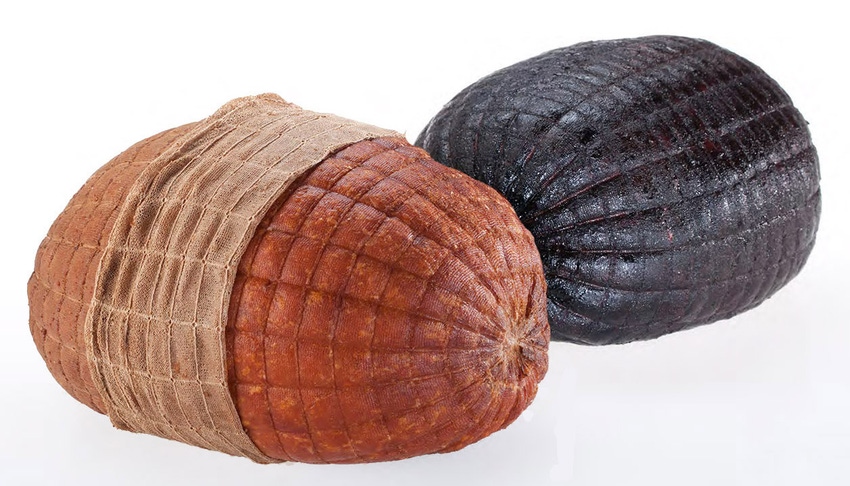October 30, 2014

Netting for food processing comes in many different materials, patterns, sizes, colors and flavors. How does a processor choose which one is best for their product?
The combination of materials and patterns can seem to be endless and overwhelming. The best way to begin the process for picking the right food netting is to talk to someone who specializes in netting.
Knowledgeable netting reps collect a lot of details on the product and the process, and only then can they recommend the most appropriate net to meet your goals.
Here are seven questions you need to consider before selecting a net:
1. Are you using for further processing or are you using it for decorative final packaging?
This question is the essential first step to the selection process because the application dictates the best style of netting. Nets for final packaging, for example, are designed to show off the product inside. They might be in bright or unusual colors. They may have an attractive or unusual closure. These nets are designed to be both functional and enhance the look of the product.
2. If it’s for further processing, what type of protein are you processing?
The more specific information you can provide, the easier it will be to choose the correct netting. Whole muscle or slurry? Seasoned or plain? Each of these pieces of information indicates a specific type of net that is better suited to reach your end product goal.
3. What is the size, weight and length of your product?
The dimensions of your product can indicate the recommended pattern and material for the net. For example, a large pattern would not show up well on a small product. A heavy product may require a sturdier net than a light weight one.
4. Do you want to add color, smokes, release agents or spices?
Adding these items can optimize your processing time by consolidating the processing or cooking steps. Release agents are designed to help the net come off quickly and cleanly, so using them can prevent surface tears and improve yields. Adding smoke to the netting can improve your cycle time by eliminating the smoke step.
5. What is the desired shape of the finished product? Does it need a surface pattern?
One of the functions of netting is to shape the meat during processing and add a pattern to the surface of the meat.
6. How will the product be placed into the net?
Will the product be placed inside by hand or in an automated process? Loading by hand usually uses individual pieces of netting in a preset length. An automatic loading process will use bulk netting on rolls, shears or rucks.
7. What temperature will the product be cooked at?
Different nets have different temperature ranges. The cooking temperature will indicate which type of net can be used.
Netting for food processing is not a one-size-fits-all. Consider all the factors above before selecting the knitted netting that will best fit your product.
Lisa Vacco‐Orlowski, netting market manager for Flavorseal, is 30‐year veteran of the netting industry with experience in all aspects of netting manufacturing and sales. She works at the company’s corporate offices in Avon, OH, where she develops innovative netting products for the meat industry. The facility maintains rigorous processes for food safety management and quality control, and is Safe Quality Food (SQF) Level 3 certified.
About the Author(s)
You May Also Like


